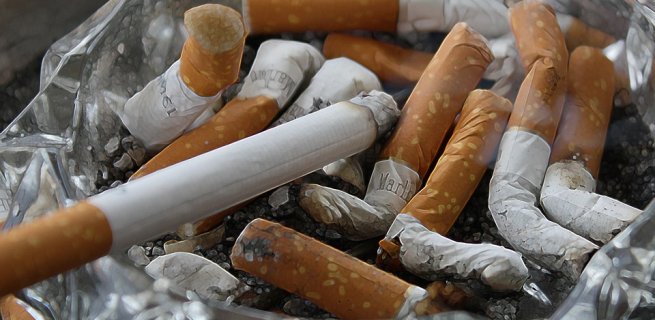Smokers will soon be hit in the pocket again, after new legislation has cleared the way for further price hikes on tobacco.
The Federal Government has voted to raise the levy on cigarettes by 12.5% over four years, which will fill government coffers with an extra $4.7 billion.
Aussies who smoke will pay $40 a packet by 2020, in a move that’s been billed by the Government as a health measure rather than a financial one. Australia is already one of the most expensive countries to buy cigarettes – with a packet already costing around $30.
Tough laws on smoking
Australia has some of the most stringent anti-smoking laws in the world too, including the Tobacco Plain Packaging Act, introduced in 2011, which prohibits packets from carrying logos and requiring them to display health warnings.
Smokers too, have been facing increasingly tough bans on where they are allowed to smoke over the past decade.
Manly Council’s controversial ban on smoking on its beaches was put in place in 2004. Since then, progressive law changes have meant that in NSW it is illegal to smoke around children’s play equipment in public places, swimming pools, sports grounds and public transport platforms. The buffer around building entrances is 4 metres, and last year, all outdoor dining areas became smoke free.
Queensland recently introduced a new set of bans, which by and large, mirror those of NSW. As of January next year, NSW smokers who do the wrong thing will be fined $240.
Many overseas countries look at Australia’s stance on smoking as somewhat draconian, but anti-smoking groups argue that since law-makers got really tough, the statistics began to speak for themselves.
Previous tax increases in 2010 and 2013 have seen cigarette prices double in just 6 years and the country’s smokers plummet to less than 15 per cent.
Smoking rates are in decline
While number of smokers have been steadily declining for many years, official rates show that less adults smoke now than ever before. A health survey of the Australian population conducted in 2013 estimated that 3.1 million Australians were smokers, amounting to around 13 per cent of the population, with 90 per smoking daily.
But the Government still believes the rates are too high, and has committed to reducing the national adult daily smoking rate to 10% and halving the Aboriginal and Torres Strait Islander adult daily smoking rate from nearly 50% by the year 2018.
Of course, what often happens when law-makers get tough on something, is that the contraband starts to thrive. To that end, the Australian government recently allocated $7.7 million in additional funding to combat the sale of illicit tobacco in the country.
Fighting the illicit tobacco industry
The money is intended to help fight the organised crime gangs attempting to smuggle illicit tobacco into Australia, by beefing up local resources and helping Australian teams to forge stronger relationships with international law enforcement agencies to infiltrate crime syndicates and stop smuggling at the source.
Since October 2015, a specialised Tobacco Strike squad working with our Border Protection teams, has stopped the evasion of $45 million in duties and taxes, seizing 25 tonnes of tobacco and 50 million cigarettes.
It is estimated that as much as 14.3 per cent of tobacco consumed in Australia is bought through the black market, which suggests that raising prices isn’t necessarily forcing smokers to quit, especially since tobacco is highly addictive, and many will look for cheaper ways to get their fix.
Naturally, this raises concerns that people would turn to illegal traders, who are selling foreign made cigarettes, from China for example, which cost as little as $5 for a packet of 20, but which contain ingredients and chemicals we know nothing about.
In this context, as the new price rise legislation was passed, some back benchers were calling for a renewed discussion about nicotine e-cigarettes, which potentially offer a healthier alternative for smokers, but which are currently banned in Australia.
Disproportionately impacting the poor
There are also concerns the price hikes will hit the poorest and most vulnerable members of our community the hardest – those who are heavily addicted but unwilling or unable to break the habit.
Preferring a nicotine fix over the basics, the concern is that poor families will go without essentials such as adequate food and clothing for themselves and their children.
Welfare groups have pointed out that past price increases have already impacted the poor, warning that further hikes are unlikely to lead to those who are most addicted quitting, and could potentially lead to the commission of crime to support the expensive habit.












This would have to be a tax grab , if our government was serious about peoples health surely they would reduce the cost of products that help people quit.
Maybe even monitor tobacco companies and put restrictions on what they actually put into a cigarette to make them so addictive, even put the legal age up to smoke every year to faze it out .
They have so many options but choose to keep lining their own pockets .